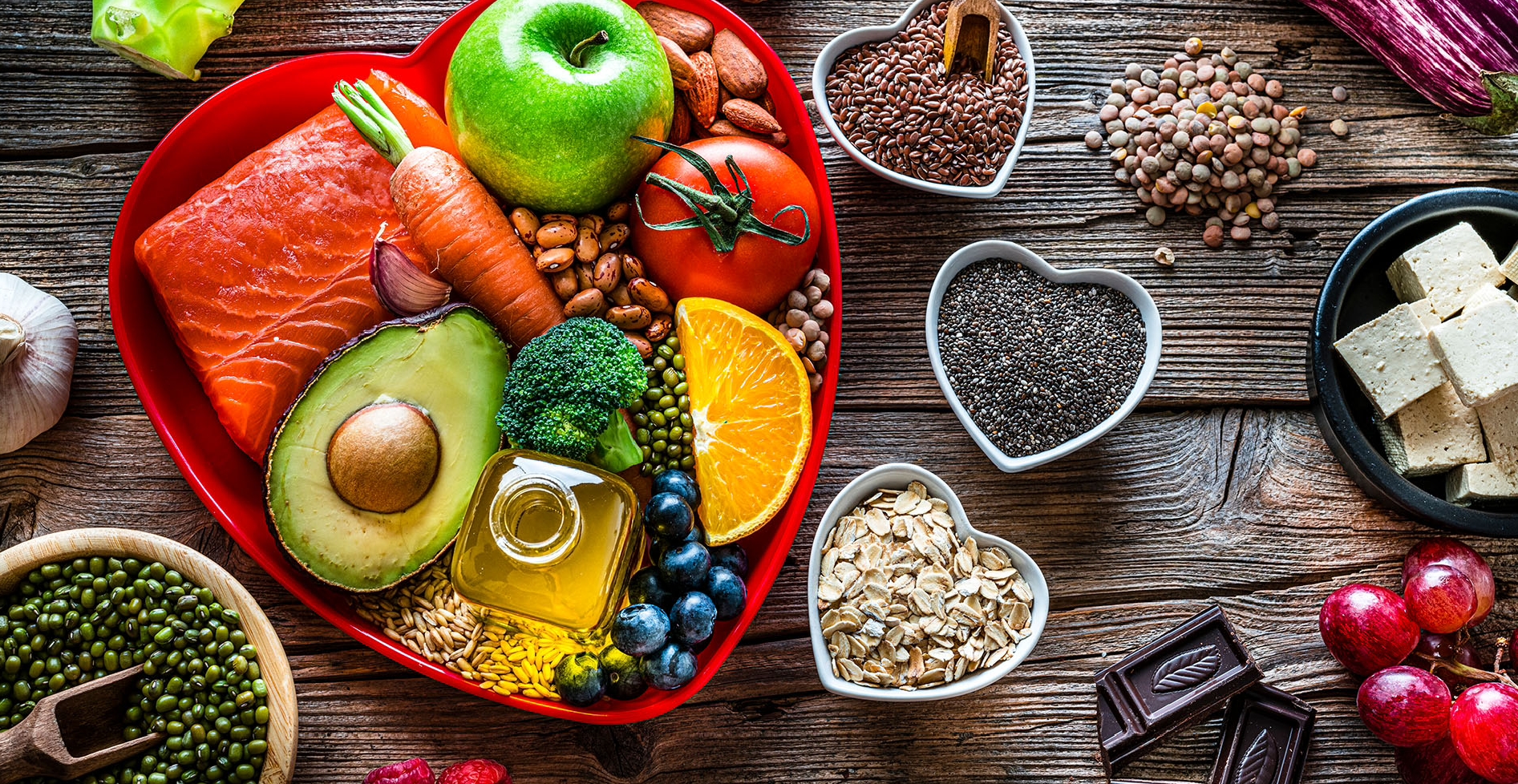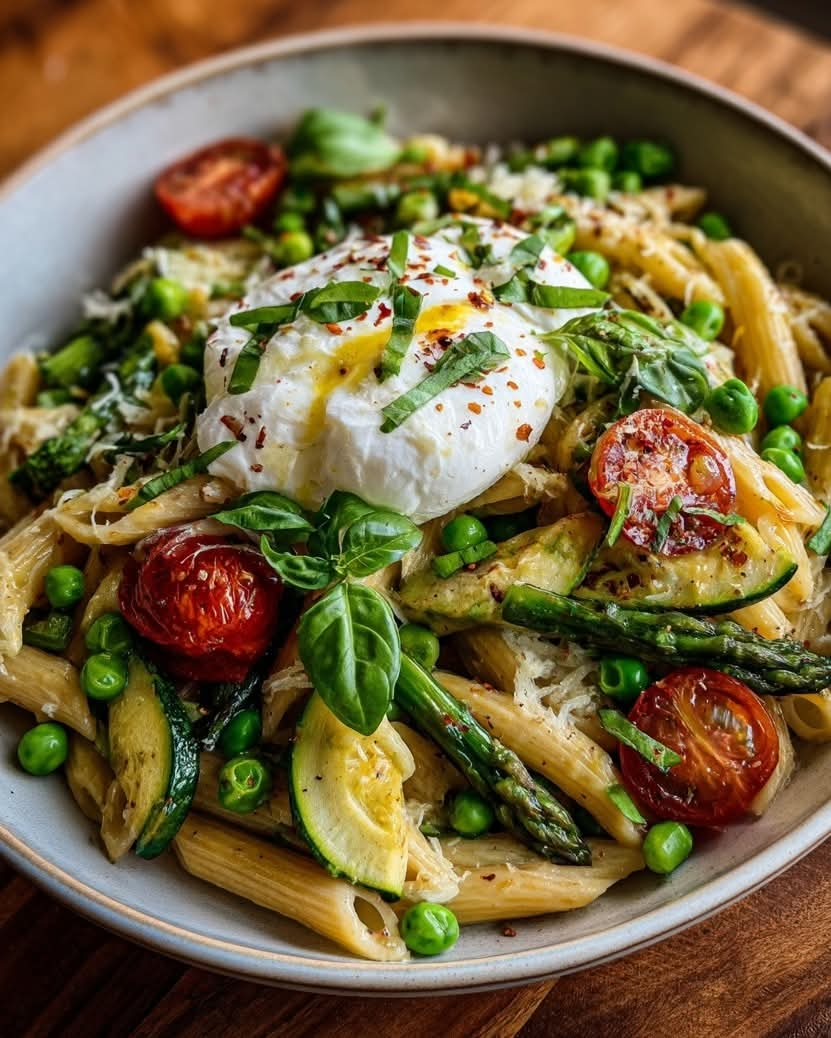Mediterranean Burrata Pasta Primavera with Spring Veggies
This Mediterranean Burrata Pasta Primavera is a light, colorful dish that celebrates fresh spring vegetables and creamy burrata cheese. Every bite balances the sweetness of peas and cherry tomatoes with the zest of lemon and the richness of olive oil. It’s simple, fresh, and elegant — the kind of pasta that feels indulgent but still healthy and vibrant.
Total Time: 25–30 minutes
Serves: 2–3
Ingredients
8 oz pasta (penne, fusilli, or farfalle)
1 zucchini, sliced
1 cup asparagus, chopped
1 cup cherry tomatoes, halved
½ cup peas (fresh or thawed frozen)
2 tbsp olive oil
2 cloves garlic, minced
Salt and black pepper, to taste
¼ tsp chili flakes (optional)
Zest of 1 lemon
1 ball burrata cheese
Fresh basil, for garnish
Instructions
Cook the Pasta
Bring a large pot of salted water to a boil.
Add pasta and cook according to package directions until al dente.
Reserve about ½ cup of pasta water, then drain and set aside.
Sauté the Vegetables
In a large skillet, heat 2 tablespoons of olive oil over medium heat.
Add garlic and cook for 30 seconds, until fragrant.
Add zucchini and asparagus, and sauté for 4–5 minutes until slightly tender but still crisp.
Stir in peas and cherry tomatoes, and cook for another 2–3 minutes until the tomatoes begin to soften.
Combine Pasta and Veggies
Add the cooked pasta to the skillet with the vegetables.
Toss well to combine, adding a splash of the reserved pasta water to create a light sauce.
Season with salt, black pepper, chili flakes (if using), and lemon zest.
Stir and cook for 1–2 more minutes to let the flavors come together.
Plate and Finish
Transfer the pasta to serving bowls.
Tear the burrata over the top so it melts slightly into the warm pasta.
Drizzle with a little extra olive oil and garnish with fresh basil.
Serve
Serve immediately while the burrata is creamy and warm. It’s best enjoyed fresh with a squeeze of lemon juice on top.
Tips & Variations
Don’t Overcook the Vegetables
The key to a good primavera is crisp-tender veggies. Cook them just until bright and slightly firm — overcooked vegetables can make the pasta soggy and dull in flavor.
Use the Pasta Water Wisely
That starchy water helps create a silky coating that ties everything together. Add it a little at a time until you reach your desired consistency — you want the pasta to glisten, not sit in liquid.
Add Burrata at the End
Never cook the burrata. Add it right before serving so it stays creamy and luscious. The residual heat from the pasta will gently melt the center.
Boost the Mediterranean Flavor
Stir in a handful of pitted olives, sun-dried tomatoes, or artichoke hearts for more depth and saltiness. A drizzle of balsamic glaze also adds a nice contrast to the creamy burrata.
For a Creamier Sauce
If you prefer a richer texture, stir in 2 tablespoons of light cream, ricotta, or a spoon of Greek yogurt before adding the burrata.
Add Protein
Top with grilled shrimp, chicken, or chickpeas to turn this into a more filling main course.
Try a Different Cheese
If you can’t find burrata, use fresh mozzarella or creamy ricotta. You’ll still get a soft, smooth finish that complements the vegetables beautifully.
Make It Vegan
Skip the burrata and instead drizzle with cashew cream, vegan ricotta, or extra virgin olive oil for a dairy-free version.
Add Herbs Generously
Fresh basil, parsley, or mint brighten the dish. You can even toss in a bit of fresh oregano for a stronger Mediterranean aroma.
Serving Tip
Serve with warm crusty bread or a side salad with lemon vinaigrette for a complete Mediterranean-style meal.
Q&A
Q: Can I make this pasta ahead of time?
A: You can cook the pasta and sauté the vegetables ahead, but add the burrata only when serving. Reheat the pasta gently with a splash of water or olive oil to revive it.
Q: What’s the best pasta shape for this recipe?
A: Short pasta like penne, fusilli, or farfalle works best because they hold the vegetables and sauce evenly.
Q: Can I serve this cold as a pasta salad?
A: Yes. Let the pasta cool, then mix with a touch of olive oil and lemon juice. Add the burrata just before serving for a refreshing Mediterranean pasta salad.
Q: Can I substitute other veggies?
A: Definitely. Try bell peppers, snap peas, cherry tomatoes, or spinach. This recipe is flexible and works with most seasonal vegetables.
Q: How do I make it more filling?
A: Add grilled chicken, shrimp, or chickpeas for protein, or toss in toasted pine nuts for a hearty, nutty crunch.
Nutrition
(Per Serving – Approx. 1 of 3 Servings)
Calories: 460
Protein: 19g
Fat: 21g
Carbohydrates: 49g
Fiber: 5g
Sugar: 6g
Sodium: 420mg
(Values are approximate and can vary based on pasta type, burrata size, and oil used.)
Conclusion
This Mediterranean Burrata Pasta Primavera is the perfect balance of light, creamy, and fresh. The combination of bright spring vegetables, silky olive oil, and the indulgent creaminess of burrata creates a dish that feels elegant yet easy. It’s quick enough for a weeknight dinner but special enough to impress guests. Serve it warm or chilled — either way, it captures the simple beauty of Mediterranean cooking: fresh ingredients, minimal effort, and maximum flavor.

